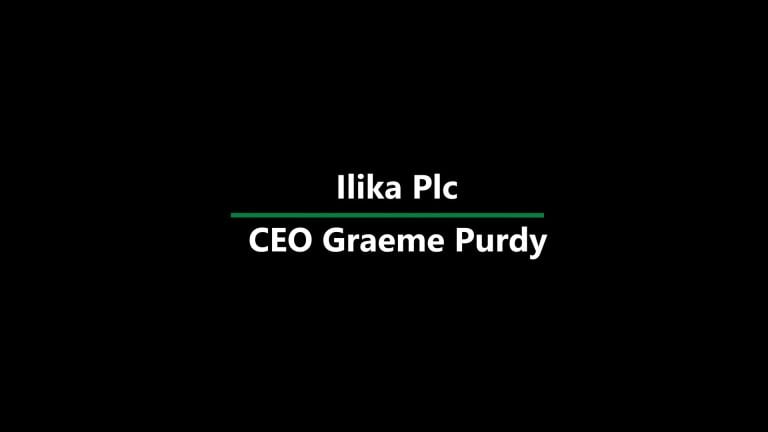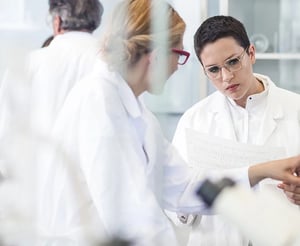Ilika plc (LON:IKA) is the topic of conversation when Liberum’s Equity Research Analyst Adam Collins caught up with DirectorsTalk for an exclusive interview.
Q1: Ilika provided today their half-year report, now it seems they have made strong progress with engaging new potential commercial partners over the last 6 months. Would you agree?
A1: Yes, I would. I think they made pretty good commercial progress and doing pretty much everything we might have expected of them but for the signing of their first elusive licence. In fact, as of the end of ’18, they had 90 potential customer engagements versus about 70 year earlier.
In terms of some of the more important interactions, those are the ones closest to commercialisation, they’ve made particular progress. They had samples out with 16 customers in the last calendar year, that’s roughly double a year earlier, they had 4 licence agreements under consideration from customers from 3 a year earlier. We now know there are 4 battery development projects on the micro battery side having had 3 in the year earlier.
So, all moving in the right direction.
Q2: The company is running a portfolio of Stereax deployment projects with Galvani, Lightricity, Titan Wind and their recently announced AMANDA project. Which one are you most excited about?
A2: In fact, each one of those projects is an example of the different areas of opportunity in solid state, in the micro battery area.
The Galvani project is most interesting to us because it relates to implantable medical devices using miniature scale batteries capable of triple charging. In that area, there aren’t batteries in the lithium-ion space that are capable of doing either so there’s a clear and present market opportunity that only this product can properly address. Galvani is looking to develop miniature nerve stimulators which integrate into electro impulse battery power source and the device that harvests some of the vibrations in the body in order to power it. The company’s solid state batteries have that key characteristic, they’re small enough and they have the low leakage which h is required to make that happen.
In fact, my excitement around the medical space is illustrated by this split of a valuation interest at the company right now, roughly two thirds of this valuation last year came from medical device makers.
Q3: The company is getting a lot of publicity for its large format ‘Goliath’ batteries, what’s its competitive edge in this area?
A3: Well, maybe just to stand back slightly, the opportunity in automotive is huge. A lot of battery commentators, ourselves included, expect solid state batteries to be the next bi automotive technology beyond lithium-ion. They promise something like twice the energy density in their full range of current configurations whilst also having very high power density which is helpful for charging time.
It’s not an uncompetitive space, a handful of existing and future car makers are researching solid state batteries in auto, such as Toyota, Mercedes, Dyson and Apple and also some of the Li-ion battery makers are involved such as LG Chem. There’s plenty of battery makers and car makers who really haven’t done very much to date that will need access to some technology from somewhere and IKA have got some pretty strong credentials in solid state space.
It first got involved about 10 years ago with Toyota to screen candidate materials for its automotive projects and it’s got about 12 patents filed in the area. Probably, I would say its biggest competence around this area is on the manufacturing side, the expertise it has in vacuum deposition might be helpful in terms of designing low-cost printing technique for scaling up EV’s batteries over time in a cost effective manner.
Q4: Just looking over the two then, do you think the thin film batteries or ‘Goliath’ are the most valuable part of their portfolio?
A4: It’s both actually. Through the next 5 years, the micro battery market is going to provide a commercial opportunity, auto is a little bit later.
We think the micro battery market for sensors could be worth about $2 billion by the mid to late 2020’s and it’s ready to go really right now although batteries have to be integrated into customer products. The EV battery opportunity, assuming it becomes the dominant technology in electric vehicles, could be 50 times the size of that market within 20 years.
So, one is going to be more competitive come later but be huge, the other one is much less competitive, smaller but they could take a decent market share and will kick in earlier.
Q5: What are you looking forward to hearing from Ilika over the next 6 months?
A5: There’s three things we think are on the horizon with different degrees of probability.
The first thing, although the timing is hard to pin down, is the first licence for micro battery, that probably is the single most important thing in the near-term that could energise the shares. It’s been a while in coming but these are leading-edge technologies that, as I said, have to be integrated into customer products. The first licence, we think will happen at some stage, it’s a matter of when not if.
There’s a couple of other commercial milestones that we expect to see in the next 6 months, the second of their automotive projects, the MoSSES project with McLaren should be starting soon, they’ve already started the project with Honda and Ricardo.
We then expect to see some news on the Galvani and Lightricity projects, the first programmes are scheduled to come to an end around the middle of the year but we’re hoping for some sort of rollover, funded either by further grant funding or perhaps by arrangement with the customers.






































